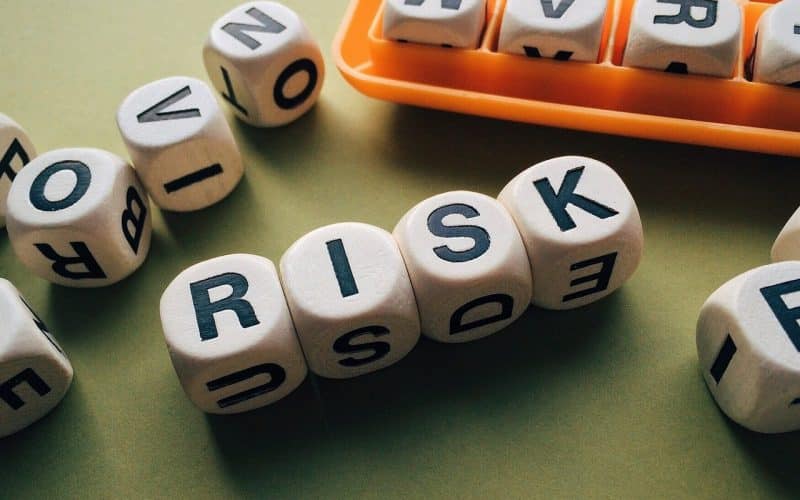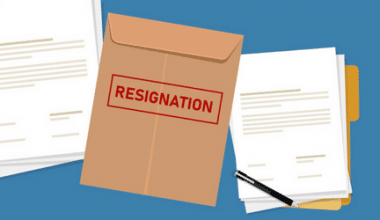What good is any business concept, strategy, or safeguard out there if you are clueless as to how to implement it? It’s as good as being clueless about the strategy in the first place. Well, the same is applicable to risk management. It’s hardly of any use to you if all you know is just the concept of how it works or a simple definition. You cannot deny how vital risk management is to any business. Therefore, implementing it should be a top priority. But how do you go about that without prior knowledge of the risk management process? Anyway, for starters, you just got really lucky with this one—more like you hit the jackpot. And that’s because you can master the risk management process in 5 steps.
Yea, I totally agree. Sounds like won’t be a problem after all.
So with our post on the risk management basics, we can quickly dive into getting acquainted with the risk management process in the 5 steps below;
Recognize the Threat
The first step is to determine the risks the company is facing in its current operating environment. But then you need to understand that there are numerous types of risks. This includes legal risks, environmental risks, market risks, regulatory risks, and so on. Basically, it’s critical to recognize as many of these risk factors as possible. These risks are manually recorded in a manual environment.
If the company uses a risk management solution, all of this data is go directly into the system. This approach has the advantage of making these risks visible to all stakeholders in the organization who have access to the system.
Rather than being locked away in a report that must be requested via email, anyone interested in seeing which risks have been identified can access the information in the risk management system.
Assess the Threat
It is necessary to analyze a risk once it has been identified. The company must determine the risk’s scope. It’s also crucial to comprehend the relationship between risk and various internal factors. Furthermore, you`d also need to determine the severity and seriousness of the risk by looking at how many business functions it affects.
Basically, there are risks that could bring the entire business to a halt after discovery, while others will only cause minor inconveniences in the analysis. This analysis must be done manually in a manual risk management environment.
However, one of the most critical basic steps in implementing a risk management solution is mapping risks to various records, regulations, procedures, and business processes. This means the system will already have a risk structure that will assess risks and inform you of the risks’ long-term consequences.
Assess or rank the danger
Risks must be prioritized and graded. Depending on the severity of the risk, most risk management strategies have different risk categories. Risks that may result in catastrophic loss get the highest ratings, while risks that can cause any inconvenience the lowest.
Ranking risks is crucial because it helps the company to get a holistic view of the risk exposure across the board. The company may be vulnerable to a number of low-level threats, but this may not necessitate interference from upper management. Just one of the highest-rated threats, on the other hand, necessitates urgent action.
Deal with the Threats
All risks must be diffused or removed as quickly as possible. This is accomplished by contacting specialists in the area to which the threats pertain. In a manual environment, this involves calling each and every stakeholder. Then going further to set up meetings for everyone to speak about and address the issues.
A risk management solution will send alerts to all relevant stakeholders from inside the system. Inside the system, a conversation about the threats and potential solutions can take place. The upper management should, however, keep a close eye on the solutions proposed and the system’s development.
Rather than anyone having to email each other for alerts, everyone can get them directly from the risk management solution.
Keep an eye on the risk and evaluate it
Not all risks can completely go off the radar; some risks will still exist. Market and environmental threats are two examples of risks that must be constantly controlled. Manual processes depend on conscientious workers to keep track of things. These practitioners ensure that all risk factors are closely monitored.
On the other hand, the risk management system in a digital world controls the organization’s entire risk framework. Any improvement in a factor or risk is instantly apparent to everyone. Computers are also much better than humans at constantly tracking threats. By monitoring risks to your company’s continuity you can clear off any
The Risk Management Process’s Fundamentals Remain the Same
In a digital world, the fundamentals of risk management remain the same. What shifts is how quickly these measures can be completed. Furthermore, as should be obvious by now, there is no competition between a manual and a digital risk management system. In recent times, companies face a confrontation with a slew of new risks, and modern issues necessitate modern solutions.
Evaluation of Risk Management
Risk management reviews are critical for any company that wants to improve its risk management performance. These tests and assessments assist companies in fully comprehending their own capacities, strengths, and weaknesses. More assessments yield more information on where the company’s risk management system needs to be improved.
However, manually performing these assessments can be challenging. But risk management solutions and technology can help to streamline the evaluation and assessment process. So before making any substantive improvements to the risk management system, it is important to conduct an assessment.
What is the concept of risk management?
Risk management is a crucial business strategy that assists companies in identifying, evaluating, tracking, and mitigating the risks they face. Risk management is used by companies of all sizes; small businesses do it haphazardly, whereas large corporations formalize it.
What is Enterprise Risk Management, and how does it work?
Enterprise risk management is a governance domain that deals with the operational, environmental, financial, regulatory, market, and other risks that have an impact on large enterprises’ outlook and planning. ERM is a common abbreviation. To simplify risk management, businesses tend to use enterprise risk management tools.
Why Is Risk Management Important?
Risk management is important because it gives a business the tools it needs to find and deal with potential risks in the best way possible. Once a risk has been found, it is easy to take steps to reduce it.
What Are the Objectives of Risk Management?
The goal of risk management is to keep risks under control. Once the possible risks have been found, measured, and kept an eye on, the final goal is to find ways to deal with or control them. in deciding if it’s worth spending time and money on the risk.
What Are the 5 Benefits of Risk Management?
- Operations are more efficient and consistent.
- Increased emphasis on security.
- Initiatives are more confident and successful.
- More pleased customers.
- A better bottom line.
What Is Risk Management Skills?
In its most basic form, risk management entails keeping tabs on potential problems, determining whether or not they can be mitigated and how they will affect operations, and then implementing preventative measures.
Who Is Responsible for Risk Management?
Risk management, monitoring operational risks, and related measures are all the responsibility of the Management Group, which consists of the President (Chair) and the heads of the various business units.
What Are the Elements of Risk?
All types of risk, whether they are speculative risks or hazard risks, have some things in common. The four most important parts of risk:
- context
- action
- conditions
- consequences.
Conclusion
With a process in place, it is easier to implement a solution with the above steps or processes. This literally removes the problem of guesswork.






